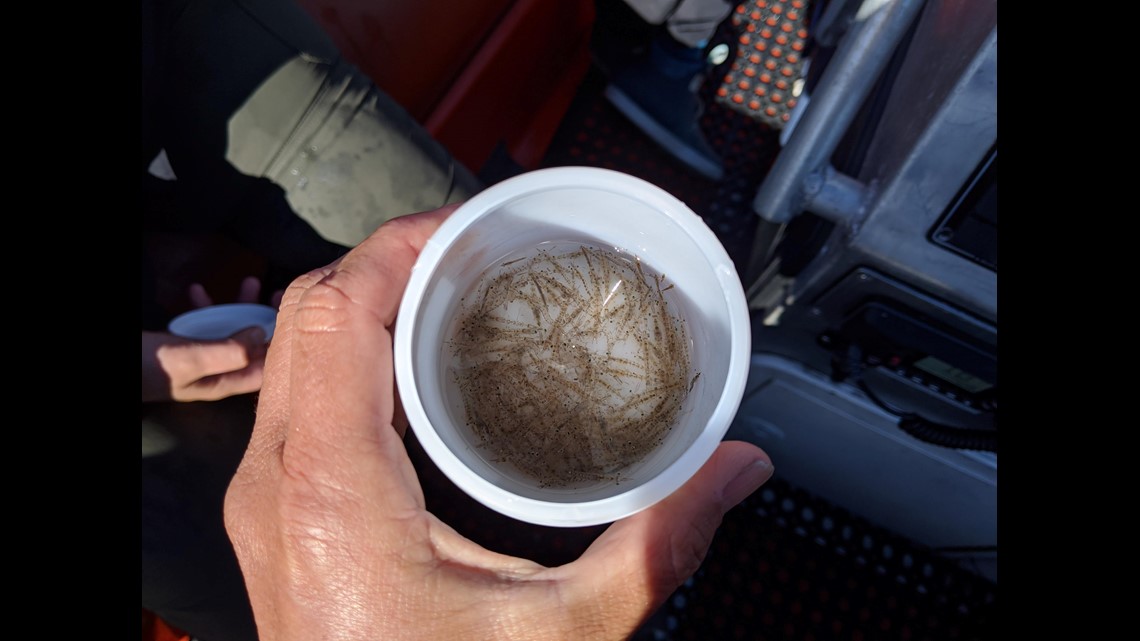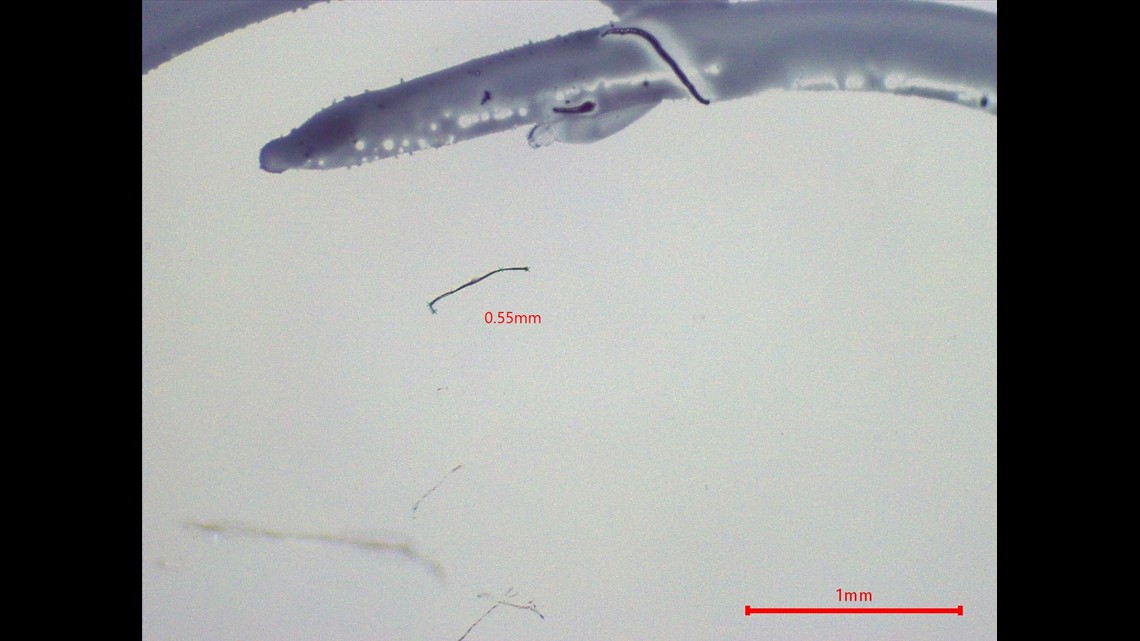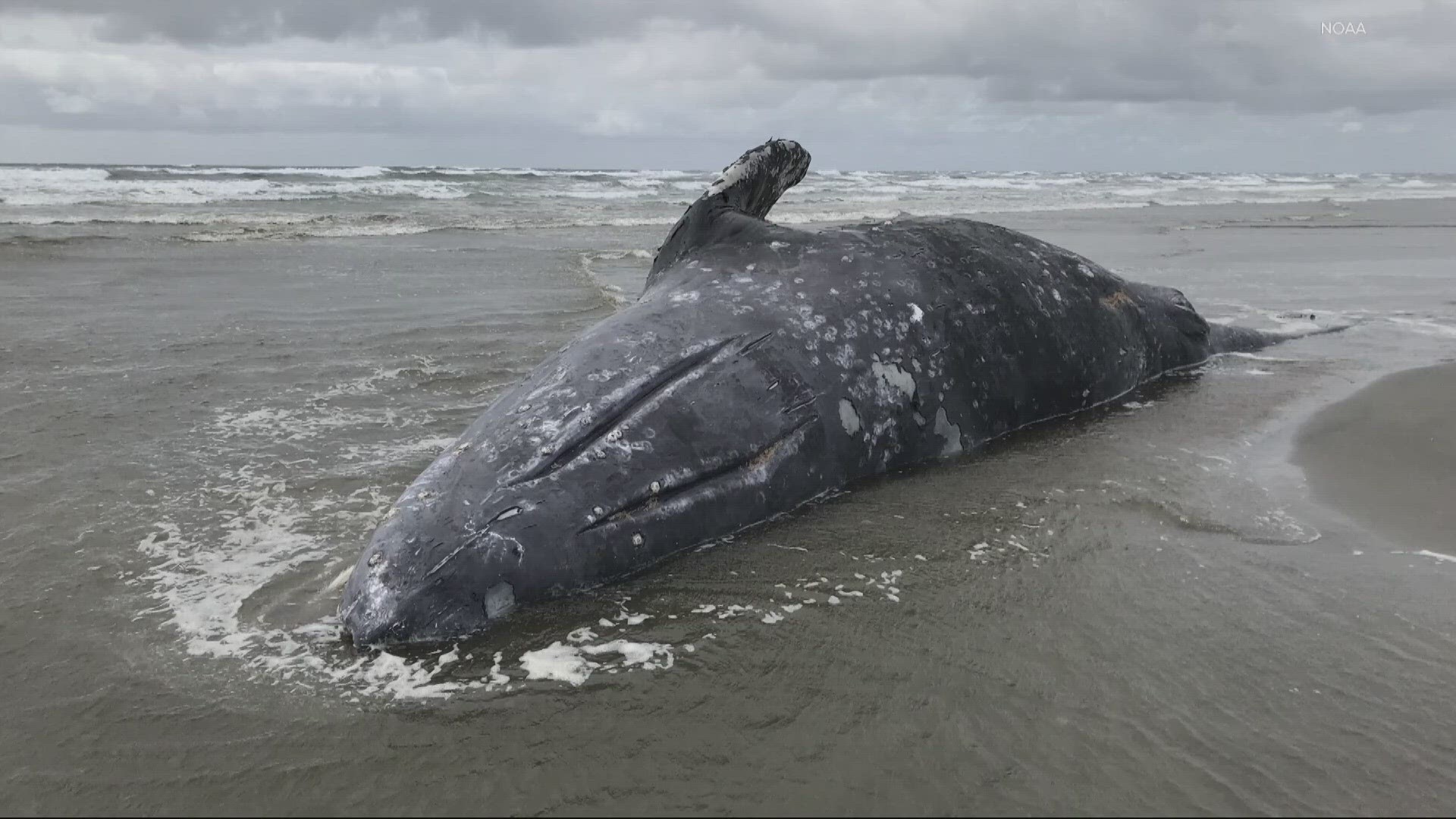PORTLAND, Ore. —
Leigh Torres, a marine ecologist at Oregon State University, has been studying gray whales for years. But her most recent research into the number of microparticles the whales were ingesting caught her a bit off guard.
“They were kind of shockingly high,” Torres said. “So much so that we redid our math multiple times to make sure that we were doing it correctly.”
It was somewhere between 6.5 and 21 million particles per day, according to Torres' research, which was recently published in the journal Frontiers in Marine Science.
To figure out how many microparticles — some made of cotton, others of nylon, polyester, polypropylene and other plastics — the whales were consuming, Torres looked at two sources: their prey and their poop.
Gray whales primarily feed on tiny organisms called zooplankton, which the cetaceans suck up off the sea floor.
Torres gathered up zooplankton, took them to a lab and crushed them up to determine how many microparticles were inside the tiny creatures.


“We estimated that each gram of tissue from a zooplankton had about four microparticles,” Torres said.
From there, it was just a matter of determining how many grams of zooplankton a whale needs to eat in a day.
Oregon State ecotoxicologist Susanne Brander, a co-author on the study, put the figure of 21 million microparticles into perspective.
“If you laid 21 million microfibers from end to end it would end up being 19 or 20 miles in length,” she said.
But 21 million might be an undercount. Torres and Brander also looked at fecal samples from the whales and found more microparticles that would be too large to have come from zooplankton. That means the whales were also ingesting particles either from sucker feeding in the sediment on the sea floor or absorbing them just swimming through the water.
“The sediment tends to be a sink for the majority of microplastics on the planet,” Brander said.
Microparticles come from our washing machines, our dryers and even our car tires so it’s no surprise to find traces of human pollution floating off the Oregon coast.
“They've been found in the Arctic Circle,” Brander said. “They've been found in the Mariana Trench and the little worms and critters that live on the sea floor there.”


Studies in other animals, mostly small rodents and fish, have shown microparticles can cause cell and tissue damage and sometimes disease, Brander said.
They can also lead small animals, like zooplankton, to feel a false sense of fullness, something known as food dilution.
“They might be less likely to go out and find food or be less likely to ingest something that's nearby,” Brander said. “It could affect nutrient absorption.”
And if zooplankton contain less nutrition, that will lead to impacts on gray whales, who are already struggling through what scientists call an unusual mortality event.
Since 2019, higher than average numbers of gray whales have been washing ashore on Pacific beaches, from Mexico up to Alaska. Experts believe the species is having trouble finding sufficient food.
While Torres doesn’t think microparticles are necessarily causing the whales’ deaths, they aren’t helping either.
“I think they're nutritionally compromised,” Torres said, “but certainly when animals get nutritionally compromised, other things start impacting them more, such as pollutant loads that they might carry from microplastics.”
There are ways to combat the spread of microplastics, though. Brander said she’s installed a filter on her washing machine to catch the tiny pieces of pollution. Avoiding single-use plastic can also help cut down on pollution in the ocean.
But to truly decrease the world’s microparticle problem, Brander said we’ll need to think bigger.
“It's industry that needs to reduce its footprint, and consumers need to have better options available to them for us to really make some headway in reducing the amount of plastic pollution,” she said.

